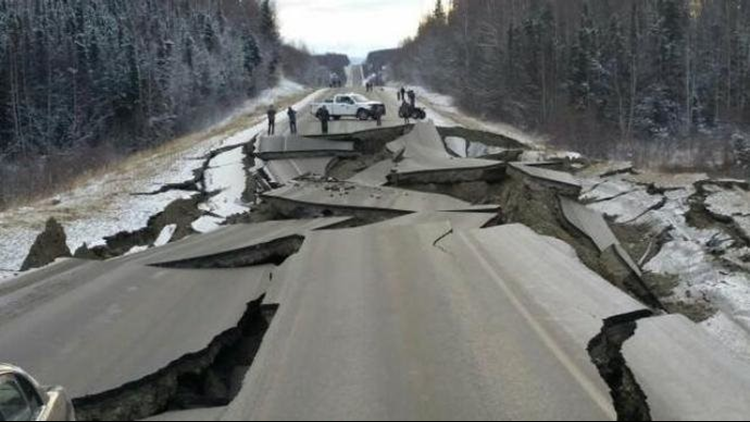The earthquake-generating geology between Alaska and Washington is very similar. That’s because large portions of both states sit on top of a giant fault, where crustal plates are being shoved past each other.
A powerful 7.0 earthquake struck near Anchorage Friday morning, damaging roads and buildings across the city.
In the case of Alaska, it’s the oceanic Pacific Plate being forced underneath the North American continent.
In Washington, it’s the smaller Juan de Fuca plate west of the Pacific Plate that’s being forced under the state.
The plates are always moving, even though they are largely locked together. Once enough energy builds up, the oceanic plate is forced under the continental plate and a large earthquake ensues, also triggering a tsunami. That’s what happened in Alaska in 1964, and that’s what’s expected to happen off the Washington coast again.
The last Washington megathrust quake, which would also affect Oregon, Northern California above Cape Mendocino, and British Columbia, happened in January in the year 1700.
But this plate boundary creates different kinds of earthquakes deep below the continental crust, in what’s called the Benioff Zone. As the oceanic plate is bent toward the mantle of the Earth it cracks, causing earthquakes just like the Anchorage quake and the 6.8 magnitude Nisqually earthquake under western Washington on February 28th 2001.



